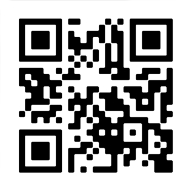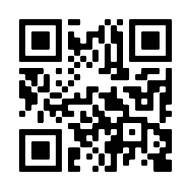Discovering U.S. Dialects: A Guide for ESL Learners
Learning English can be an adventure, especially when you dive into the fascinating world of regional dialects. At Excel English Institute, a premier English language school in Dallas, we empower students with more than just textbook English. Understanding dialects and colloquial phrases is vital for thriving in everyday conversations, whether you’re exploring Texas or traveling across the U.S.
We will introduce the most notable U.S. dialects and introduce you to state-specific words and phrases in this blog, and we will be doing a series of deeper dives into the different regions over the next few months, so don’t forget to come back and check them out! You can find a list with links at the bottom of this blog.
The History of U.S. Dialects
Dialects are variations in language specific to regions or communities. In the U.S., these differences manifest in pronunciation, grammar, and vocabulary, influenced by factors such as history, geography, and immigrant communities. The U.S., with its vast geography and diverse cultural influences, offers a rich tapestry of dialects that add charm and complexity to American English.
Early Influences on American English
The roots of American English trace back to British colonial settlers, whose accents diverged depending on the region. Additionally, indigenous languages, along with Spanish and French, contributed unique words and pronunciations to early American dialects.
Waves of Immigration
As immigrants arrived from countries like Germany, Ireland, and Italy, they brought linguistic influences that shaped regional speech. These waves of immigration introduced diverse sounds and vocabulary, enriching the American linguistic tapestry.
Modern Dialect Evolution
Today, media, technology, and urbanization continue to evolve regional accents and expressions. While some dialects are fading, others are adapting to contemporary cultural trends.
Major U.S. Dialects You Should Know
1. Southern Dialects: The Warm and Melodic Voices of the South
Where: Texas, Georgia, Alabama, Mississippi, Louisiana, and surrounding areas.
Accent Characteristics: Elongated vowels (“I” sounds like “Ah”).
Unique phrases like: “Fixin’ to” – About to do something. “Bless your heart” – Used with empathy (or subtly sarcastically).
2. Midwestern Dialect: The Heart of Neutral American English
Where: Illinois, Ohio, Wisconsin, Minnesota, and Michigan.
Accent Characteristics: Flat vowels and “neutral” pronunciation.
Key phrases: “Pop” – Refers to soda. “Ope!” – An exclamation when bumping into someone or making a mistake.
3. Northeastern Dialects: The Voice of America’s Historical Heart
Where: Massachusetts, Vermont, New Hampshire, and Maine.
Accent Characteristics: Dropping of “R” sounds (“car” becomes “cah”).
Local terms: “Wicked” – Used to emphasize (e.g., “wicked good”). “Bubbler” – A drinking fountain.
4. Western Dialects: The Language of the Open Frontier
Where: California, Oregon, Washington, Nevada.
Accent Characteristics: Casual speech patterns with relaxed vowels.
Popular phrases: “Hella” – Means “a lot” or “very.” “Gnarly” – Impressive or shocking.
5. Appalachian Dialect: Preserving the Language of the Mountains
Where: West Virginia, Kentucky, Tennessee.
Accent Characteristics: Retention of older English influences.
Common phrases: “Holler” – A small valley. “Sigogglin’” – Something crooked or uneven.
6. African American Vernacular English (AAVE): A Rich & Influential Dialect
Where: Across the U.S., with regional variations.
Accent Characteristics: Distinct grammar patterns and pronunciation.
Example terms: “Finna” – Going to. “Throw shade” – Subtly insult someone.
7. Southwestern Dialects: A Blend of Cultures & Languages
Where: Arizona, New Mexico, parts of Texas.
Accent Characteristics: Heavy influence from Spanish.
Common phrases: “Chili” – Refers to green or red chili peppers. “Pueblo” – A village or town.
8. Hawaiian Pidgin: The Unique Voice of the Aloha State
Where: Hawaii
Influences: Hawaii’s linguistic blend includes Hawaiian, Asian, and European influences.
Common phrases include: “da kine” (something unspecified) and “pau” (finished).
State-Specific Words and Phrases
California
- “Cruising” – Driving around casually
- “Lagging” – Delaying or being slow
- “The 101” / “The 405” – Refers to the highway, always prefixed by “the”
New York
- “Schlep” – Carrying something heavy
- “Brick” – Extremely cold, as in “It’s brick outside”
Texas
- “Big as Dallas” – Something very noticeable or obvious
- “All hat and no cattle” – Someone who talks big but lacks substance
Louisiana
- “Lagniappe”– A little extra or bonus
- “Neutral ground” – The median strip on a street
- “Pass a good time” – To have fun
Minnesota
- “Hotdish” – A casserole dish
- “Uff da” – An expression of surprise or dismay
Florida
- “Snowbird” – A person who moves to Florida for the winter
- “No-see-ums” – Tiny biting insects
FAQs About U.S. Dialects
1. What is the most widely understood dialect in the U.S.?
The Midwestern dialect is often considered the most neutral and widely understood.
2. Do dialects affect grammar, or just pronunciation?
Dialects influence grammar, vocabulary, and pronunciation. For example, double negatives are common in some Southern dialects.
3. Can learning dialects improve my career prospects?
Yes, understanding regional language variations helps in personal and professional communication, especially in customer-facing roles.
4. Are there resources to practice U.S. dialects?
Yes, Excel English Institute offers resources, including practice exercises, cultural immersion activities, and expert-led workshops.
5. How do I know which dialect to focus on?
It depends on your goals. If you’re moving to a specific state, focus on that region’s dialect.
6. Is it hard to switch between dialects?
With practice and exposure, switching between dialects becomes easier. Our courses help you master this skill.
Strategies for ESL Learners to Master U.S. Dialects
1. Immerse Yourself in Regional Media
Watch movies, TV shows, and listen to podcasts set in specific regions. For example:
- Southern Dialects: Watch shows like Friday Night Lights.
- Northeastern Dialects: Listen to Boston-based podcasts or movies like Good Will Hunting.
2. Practice Listening to Native Speakers
Engage in conversations with locals or use platforms like YouTube to hear authentic accents.
3. Learn State-Specific Vocabulary
Memorize key phrases from regions you plan to visit or live in.
4. Use Pronunciation Tools
Apps like Forvo or online dictionaries can help you learn correct pronunciations of regional words.
5. Join Conversation Groups
Participate in meetups or online groups where regional dialects are spoken to practice live conversations.
6. Study Slang and Idioms
Slang and idiomatic expressions are often region-specific. Focus on mastering these to sound more natural.
7. Enroll in Advanced English Classes
Many English language schools offer specialized courses on conversational fluency, including lessons on regional dialects.
How Excel English Institute Prepares You
At Excel English Institute, we go beyond teaching standard English. Our interactive classes and real-world practice sessions immerse students in regional expressions, cultural norms, and conversational nuances. Whether you’re preparing for travel, work, or casual interactions, our comprehensive approach ensures you feel confident speaking anywhere in the U.S.
Learning U.S. dialects is a fun and essential step in mastering English. At Excel English Institute, we’re committed to helping you not just learn English, but live it. From the Texan drawl to Californian slang, we provide the tools you need to thrive in any environment.
Get started today with Excel English Institute’s ESL courses, and discover the joy of speaking English like a local!
Contact Excel English Institute to learn more about our ESL programs for F-1 students or start your application today.
Excel English Institute’s U.S. Dialects Guide for ESL Learners
Below is a list of the dialects we will be exploring in this series. Links will be added as they are published, so check back for updates!
- Discovering U.S. Dialects: A Guide for ESL Learners
- Midwestern Dialect: The Heart of Neutral American English
- Southern Dialects: The Warm & Melodic Voices of The South
- Northeastern Dialects: The Voice of America’s Historical Heart
- Western Dialects: The Language of The Open Frontier
- Southwestern Dialects: A Blend of Cultures & Languages
- Appalachian Dialect: Preserving The Language of The Mountains
- Hawaiian Pidgin: The Unique Voice of The Aloha State
- African American Vernacular English (AAVE): A Rich & Influential Dialect














